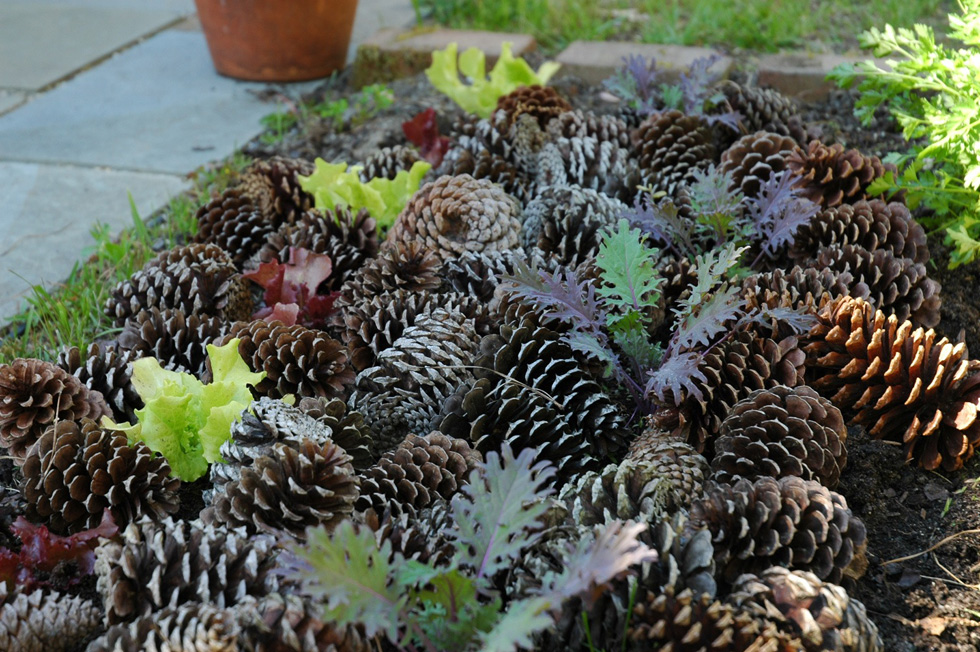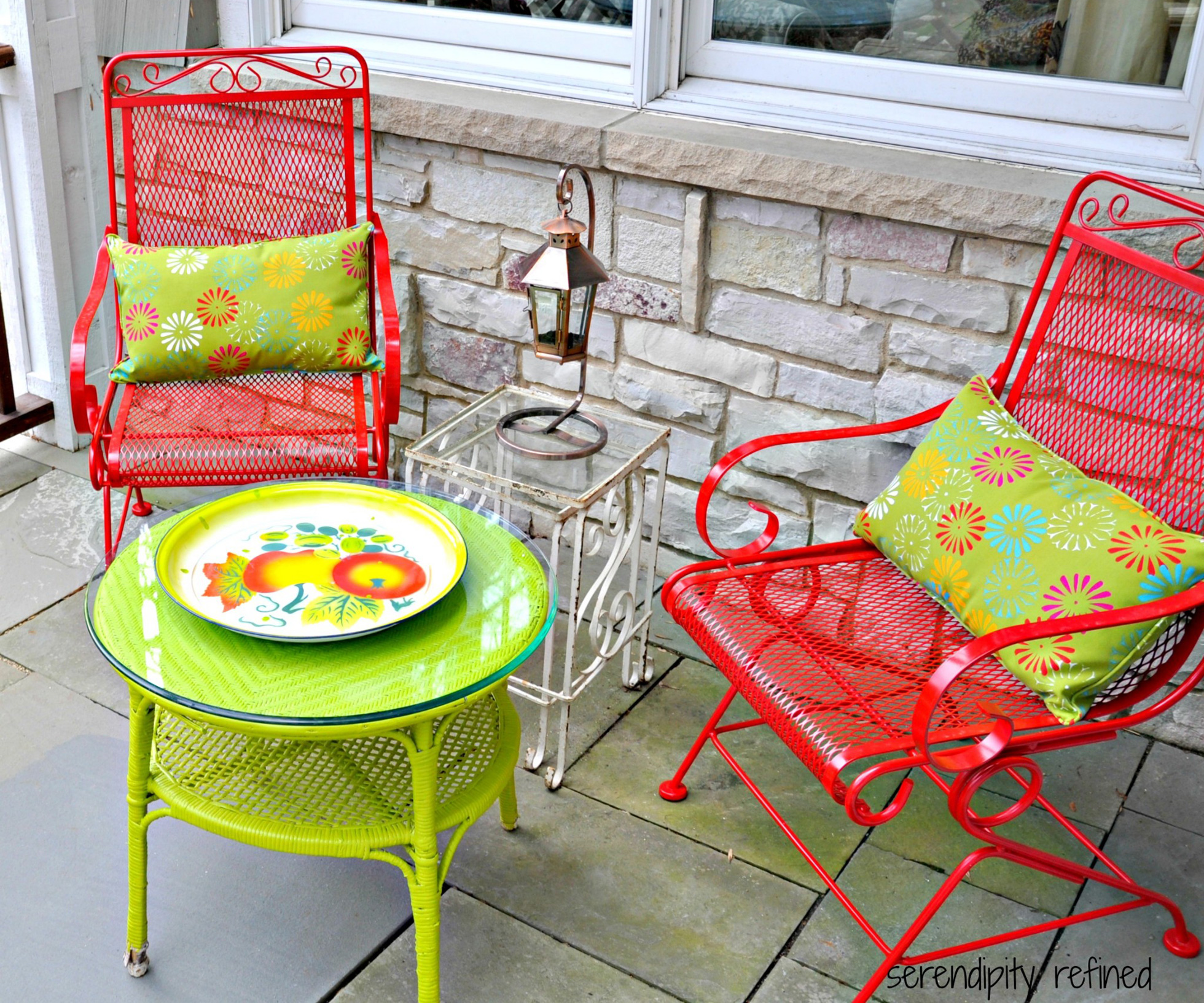Is your patio oh so shabby? These super-easy projects will make hanging outside fun again.

Oh, your poor, sad patio. Not a comfy seat to be had, and that cracked concrete . . . well, it probably looked really great when disco was king.
Whether you love to entertain friends or bask in the sun with a cocktail and a novel, here are five easy ways to inject new life into your little corner of nature.
#1 Stop the Pests that Make Your Patio Look Untidy

It’s hard to enjoy your patio if it’s covered in debris scattered by the wind or by critters with a penchant for digging and trampling. Stop critters with the humble pine cone — instead of regular mulch.
Those spiny cones will deter pests and mischievous pets.
And chances are your plants will LOVE them because they acidify the soil. Showstopper plants like azaleas and rhododendrons will burst with color.
Pine cones also decompose slowly, so you won’t be constantly re-upping your supply — saving you time and money. In most parts of the country, you can easily find them for free.
#2 Pop Some Color on that Concrete Patio

Rejuvenate that dilapidated patio with color in a can.
Try painting it a bold, bright color or a fun pattern, like chevron. You can also mimic the appearance of upscale stone patios with just a bit of paint and some stamps.
If you want to let your creative juices flow, try mimicking a carpet or even a game board, such as Twister. At the very least, a new coat of concrete stain will give that tired concrete a fresh look.
#3 Ditch the Rust But Not the Furniture

Lounging on your patio, cocktail in hand, requires something to lounge on.
But if that secondhand chaise you bought post-college is covered in rust, you’re not going to be relaxing on it in your summer whites anytime soon. But replacing it is expensive — and a waste! Give it a rust-busting makeover, instead.
There are several ways to remove rust.
If the damage isn’t too extensive, the job can be as simple as scraping it off. Use a wire brush, sandpaper, or steel wool — and a bit of elbow grease — to scour it away.
For less effort, use a drill with a wire brush attachment.
For more extensive rust issues, you can use an acidic agent like vinegar to help with the removal. Or use a chemical rust converter (such as Rust-Oleum), which actually changes the rust into a different substance and protects against future rusting, adding years to your chaise’s lifespan.
Paint over the treated spot and that chaise will be right back to its glory days and ready for you in your white shorts.
#4 Create Outdoor Storage
If a dumpy layer of clutter and scattered pots make your patio look sad, consider adding DIY storage to keep all of your outdoor whatnots neat and tidy.
“Storage can be as important outdoors as it is indoors,” says Keith Sacks, a professional landscaper (he’s VP of the landscaping company Rubber Mulch).
One of his favorite solutions is super easy and fun:
Paint wooden crates (about $10 each) to match your patio (or try a bright, fun, contrasting color) and add a sealant to weatherproof the wood. Arrange them to create attractive, rustic storage. Glue the crates together and attach wheels to the bottom if you want to be able to move it around.
#5 Build a Fire Pit — No Tools Needed
Sometimes the best way to distract from a patio that needs some love is by drawing attention to a feature that does nothing but delight.
A mini fire pit can serve as an arresting visual focal point while adding more fun and function to your patio.
Creating your own outdoor s’more-making oasis doesn’t have to take much time or money. Try DIY blog Young House Love’s super-cheap, pint-sized pit, which requires only heat-resistant pavers (also called fire bricks), which cost about $5 per stone.
Stack two layers of them in a small circle about six bricks in circumference on top of a stone slab, and there you have it: a mini fire pit.
Make sure your patio is constructed with fire-safe materials before attempting this project (sorry, wooden deck lovers!) and that you follow local fire codes.
Time to grab a few marshmallows!

JAMIE WIEBE
Jamie Wiebeis a writer and editor with a focus on home improvement and design. Previously, she worked as a web editor for “House Beautiful,” “ELLE Decor,” and “Veranda.”
